New layout for the rooms of Lombard Renaissance painting at the Poldi Pezzoli Museum in Milan , which thus continues to renew itself: after inaugurating the new lighting of the Scalone Antico in July, the via Manzoni institution continues its museum rearrangement operation, following two fundamental objectives, namely to enhance the museum’s collection and to engage the visitor to improve his or her visiting experience.
The rearrangement stems from an analysis of archival and photographic documentation that allowed for the investigation of the historical setting of the rooms, the frames of the works, the furnishings and the colors of the walls. The renewed arrangement of the works is curated by Lavinia Galli and Federica Manoli of the Poldi Pezzoli Museum and Stefania Buganza, professor of Medieval Art History and History of Lombard Art at the Università Cattolica del Sacro Cuore. The three rooms housing Lombard painting of the Renaissance with masterpieces by Boltraffio, Solario, Luini, Foppa, Bergognone, and Zenale are therefore rethought in terms of rearrangement of the works, new lighting, color on the walls, frames, more legible captions, and more explanatory room panels with QR codes to ensure constant support for the public and guide them during the visit. New signage was introduced, as a first experiment to orient the visitor, in line with the maps presented in July that invite people to explore the museum freely.
The starting point was a necessary intervention on the halls in which the last works dated back to the 1970s: whitewashing, revision of the exterior fixtures, plant adjustment, new lighting (with considerable energy savings). To these technical requirements were added new and necessary solutions for the educational apparatus that had become more readable and for the communication tools so as to stimulate the public to dialogue with the collection, in line with the museum’s new mission.
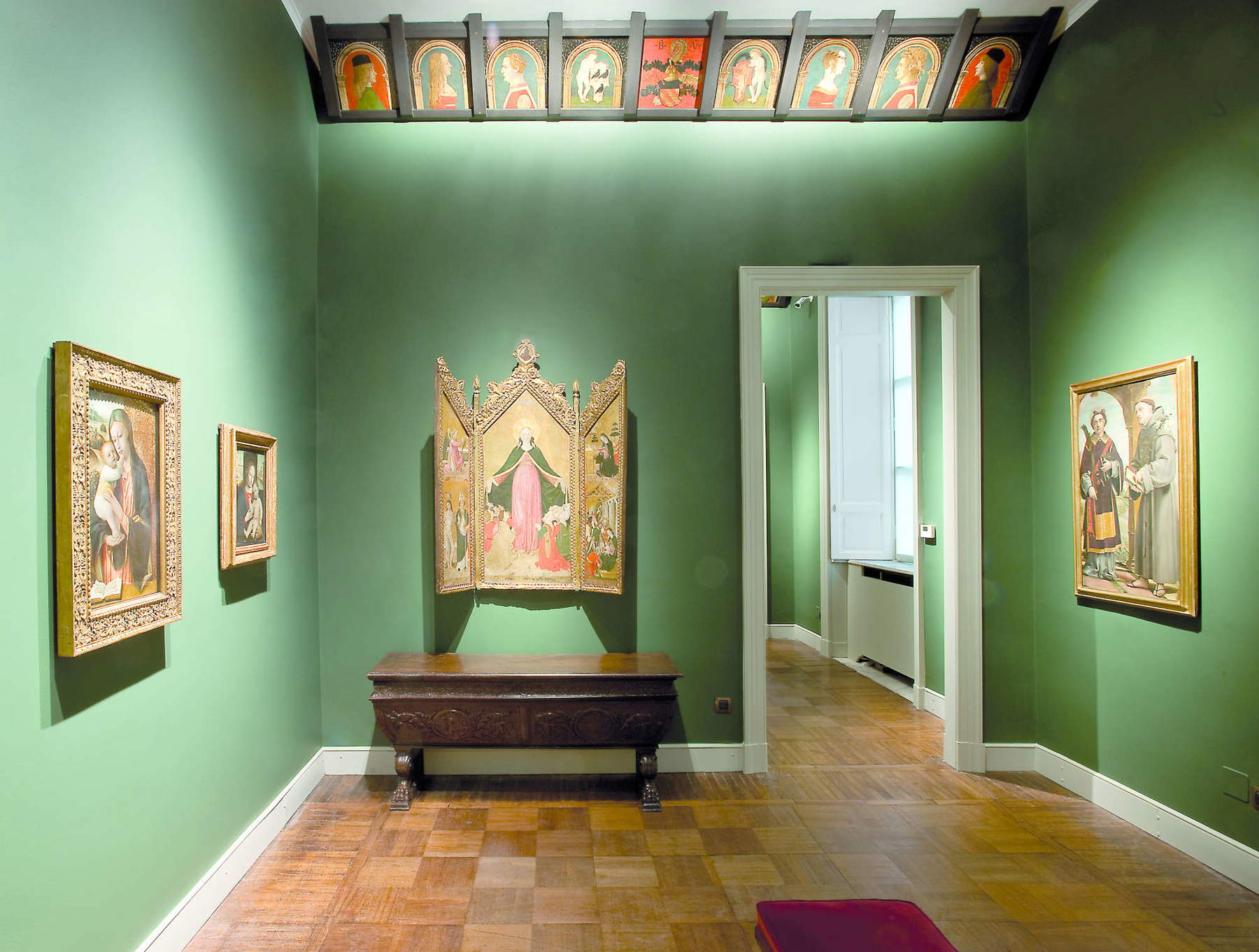 The
The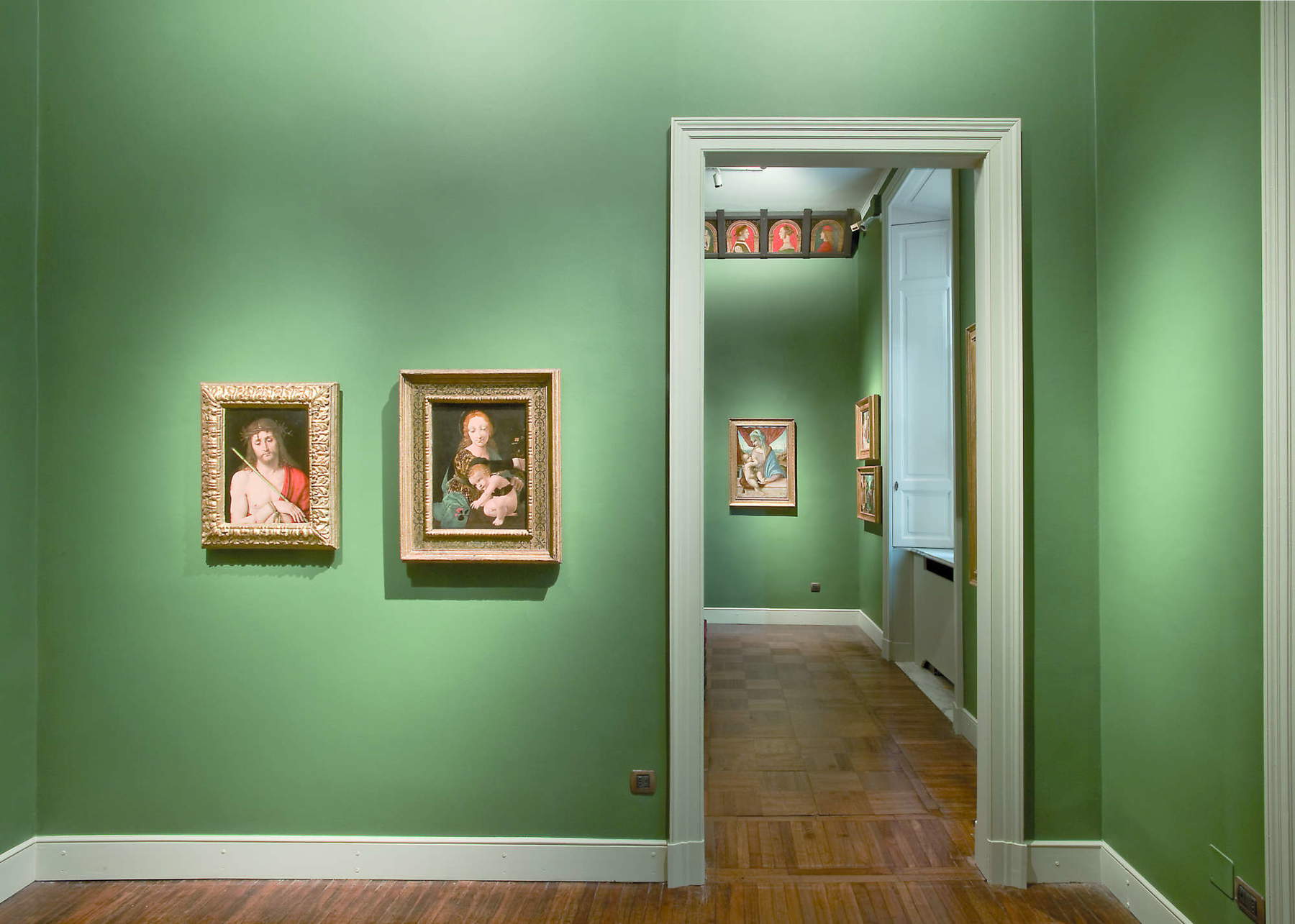 The
The The
The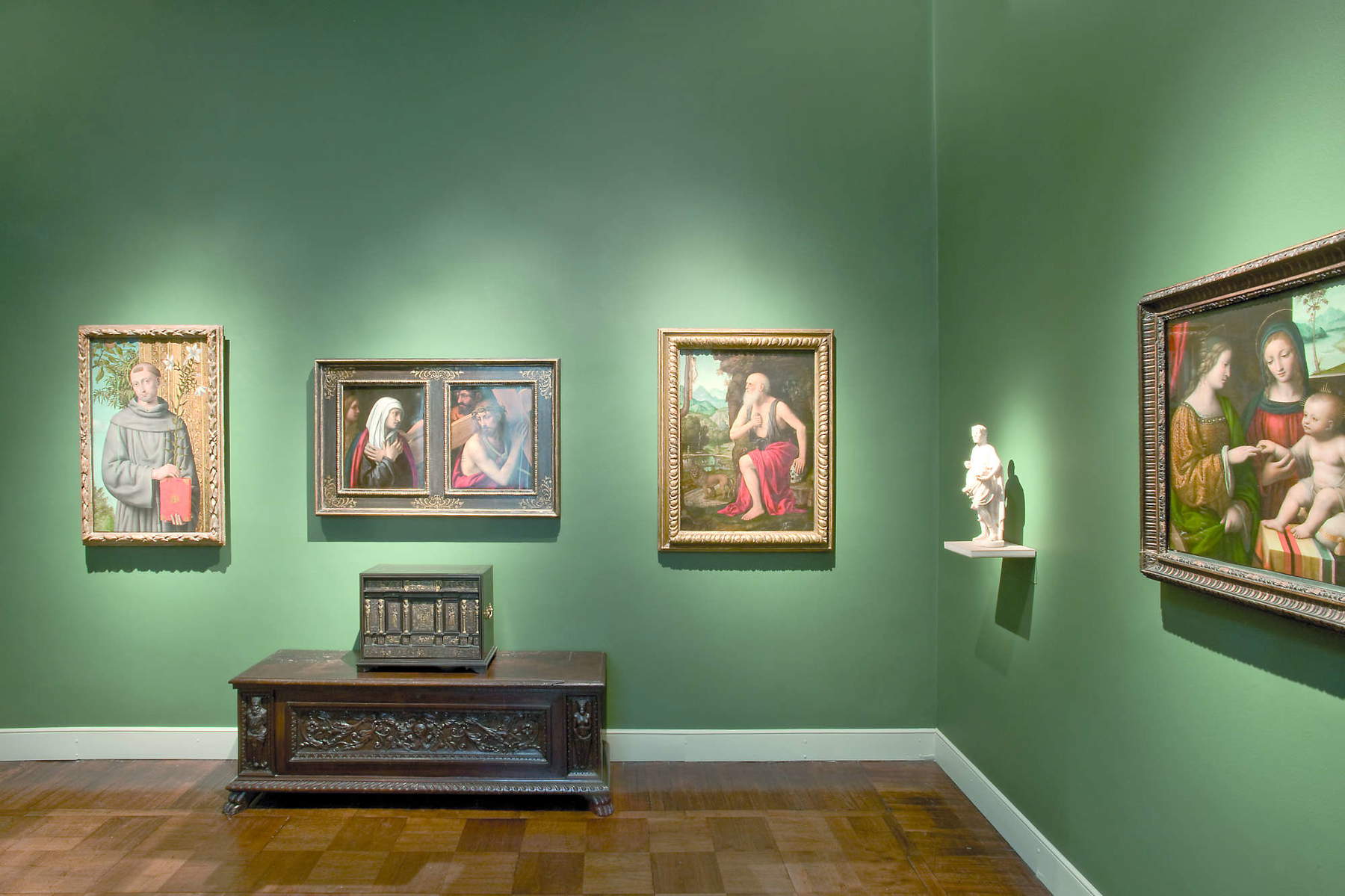 The
TheThe three rooms, which open to the visitor after walking down the Scalone antico, in the 19th century formed a single room that housed Gian Giacomo Poldi Pezzoli’s library. The decoration was permanently destroyed in the bombings of 1943. In the 1902 Visitor’s Guide edited by Mariano Viganò this room is referred to as the “Green Room” and would remain so until World War II; in fact, it is also mentioned in this way in the 1932 Guide edited by Antonio Morassi and in the 1937 Guide edited by Fernanda Wittgens. Rearranged in the 1970s with very different finishes than the historic rooms, the Lombardi rooms appeared “unconnected” to the itinerary, lacking the architectural features that distinguish the rooms of the house museum. The current project set out to recover thatallure in order to restore continuity to the narrative in line with the other rooms by creating a link between the historic and more recent rooms in order to immerse visitors in the discovery of a unified narrative, without fractures, dedicated to the founder’s house, to his collection.
These rooms contain perhaps the richest and most homogeneous collection of paintings in the museum, so it is possible to tell the story of the evolution of Lombard art from 1450 to 1535 through its protagonists with a selection of exceptional pieces. Therefore, a narrative of the evolution of style has been favored, juxtaposing paintings by the same authors (for example, bringing together works by Bergognone, Luini, and Solario previously displayed in different rooms) and distributing the works in such a way as to scan the chronology more rigorously. The narrative, in this way, will be able to guide visitors through the history of Milan and Lombardy under the Sforzas, recounting the life of one of Europe’s most splendid courts. The selection of works to be exhibited has privileged quality, state of preservation and good visibility of the same. Those paintings awaiting necessary restoration have been placed in storage, but they remain visible by appointment for scholars and can be consulted on the website. Also with a view to the enhancement of the collection, an ad hoc structure was created to be able to offer visitors the opportunity to also discover the verso of a panel by Gian Pietro Rizzi, known as the Giampietrino, namely the Madonna and Child with, on the verso, the figure of an icosidodecahedron. The wooden masterpiece by Giovanni Angelo Del Maino was then relocated to the right height, allowing its perspective to be read according to the artist’s idea, with a new anti-reflection glass and dedicated lighting that brought out clearly the polychromy, the gilding and the extraordinary features of the figures that animate the scene of the Marriage of the Virgin, a major rediscovery.
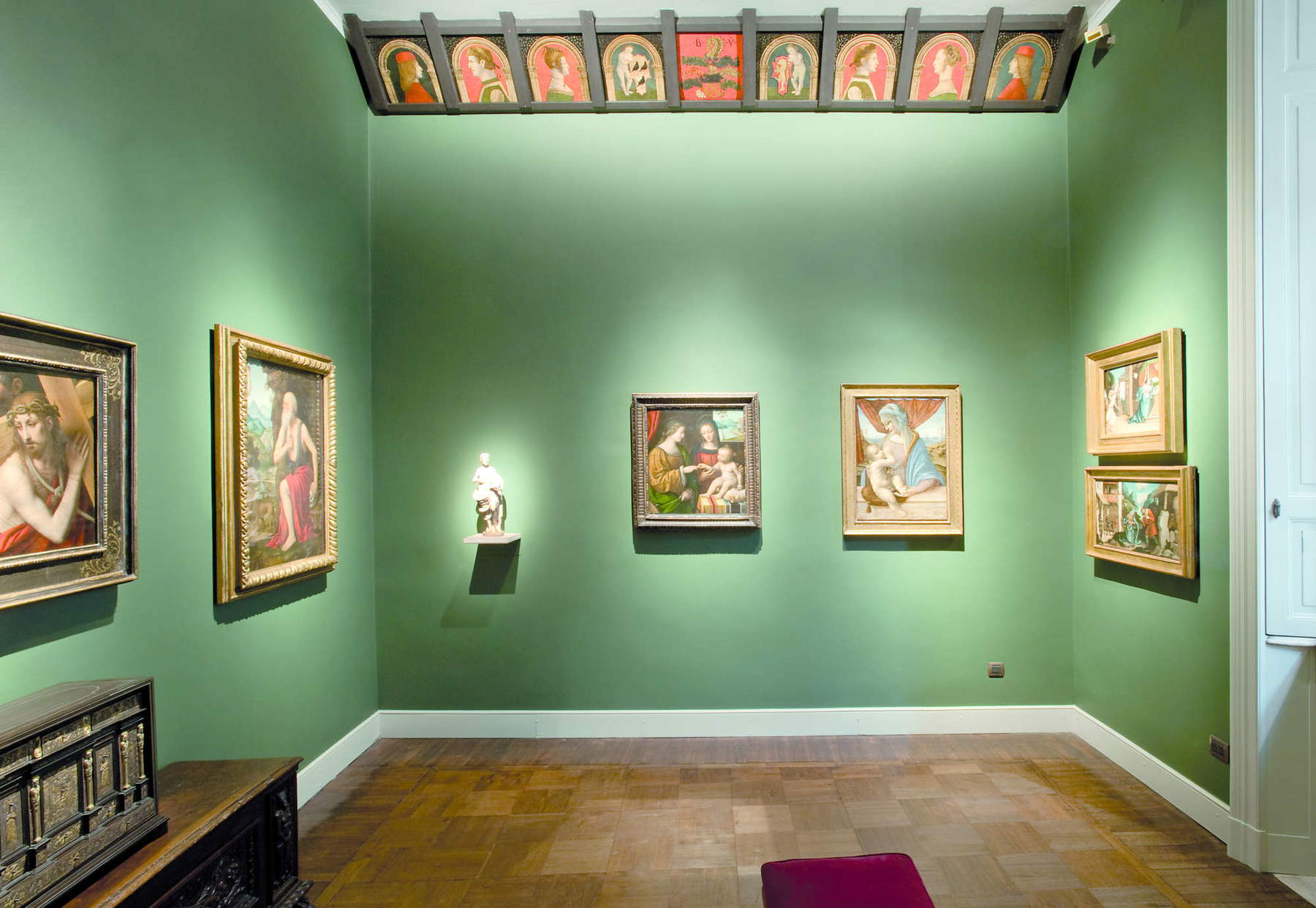 The
The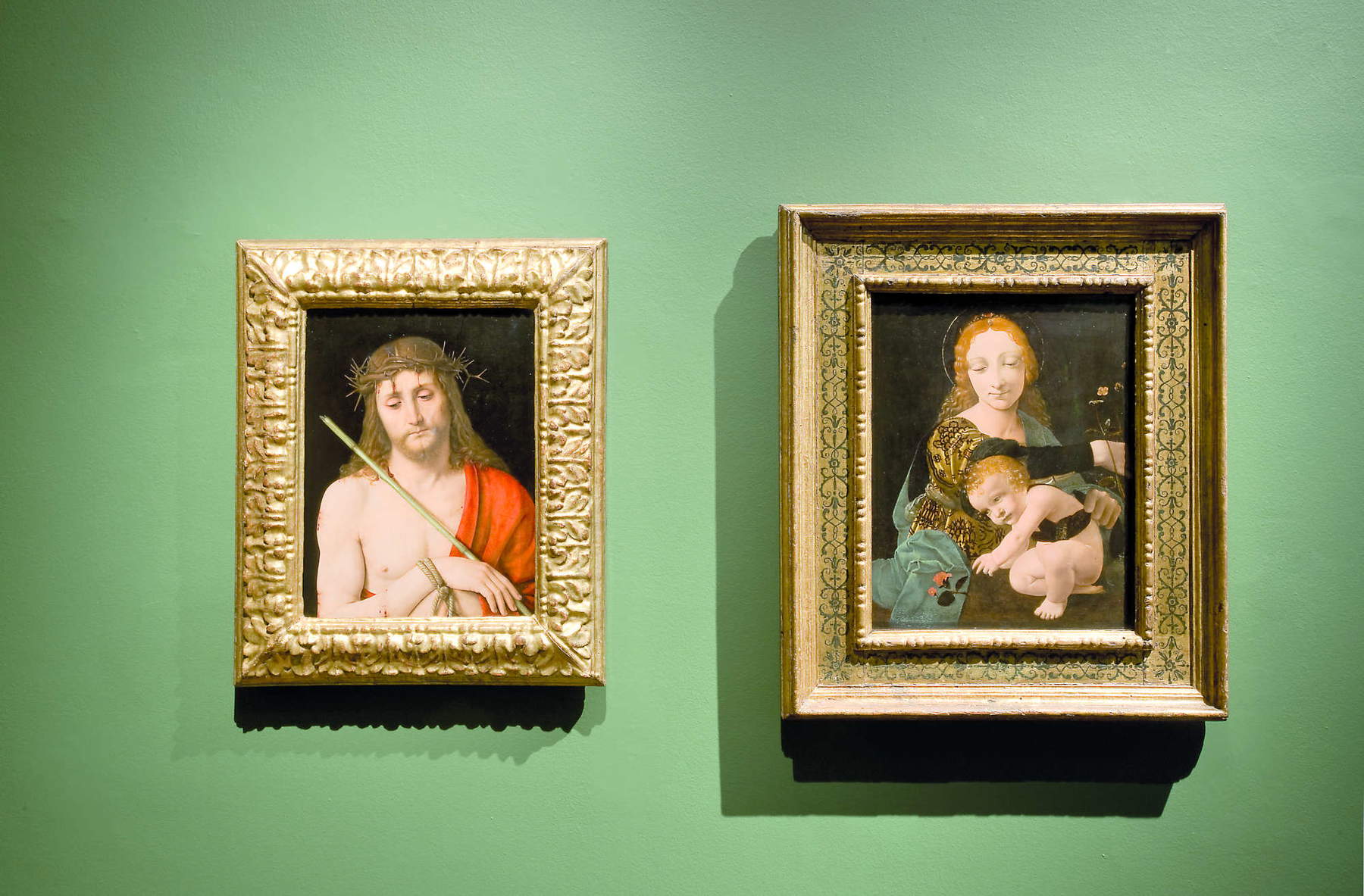 The
The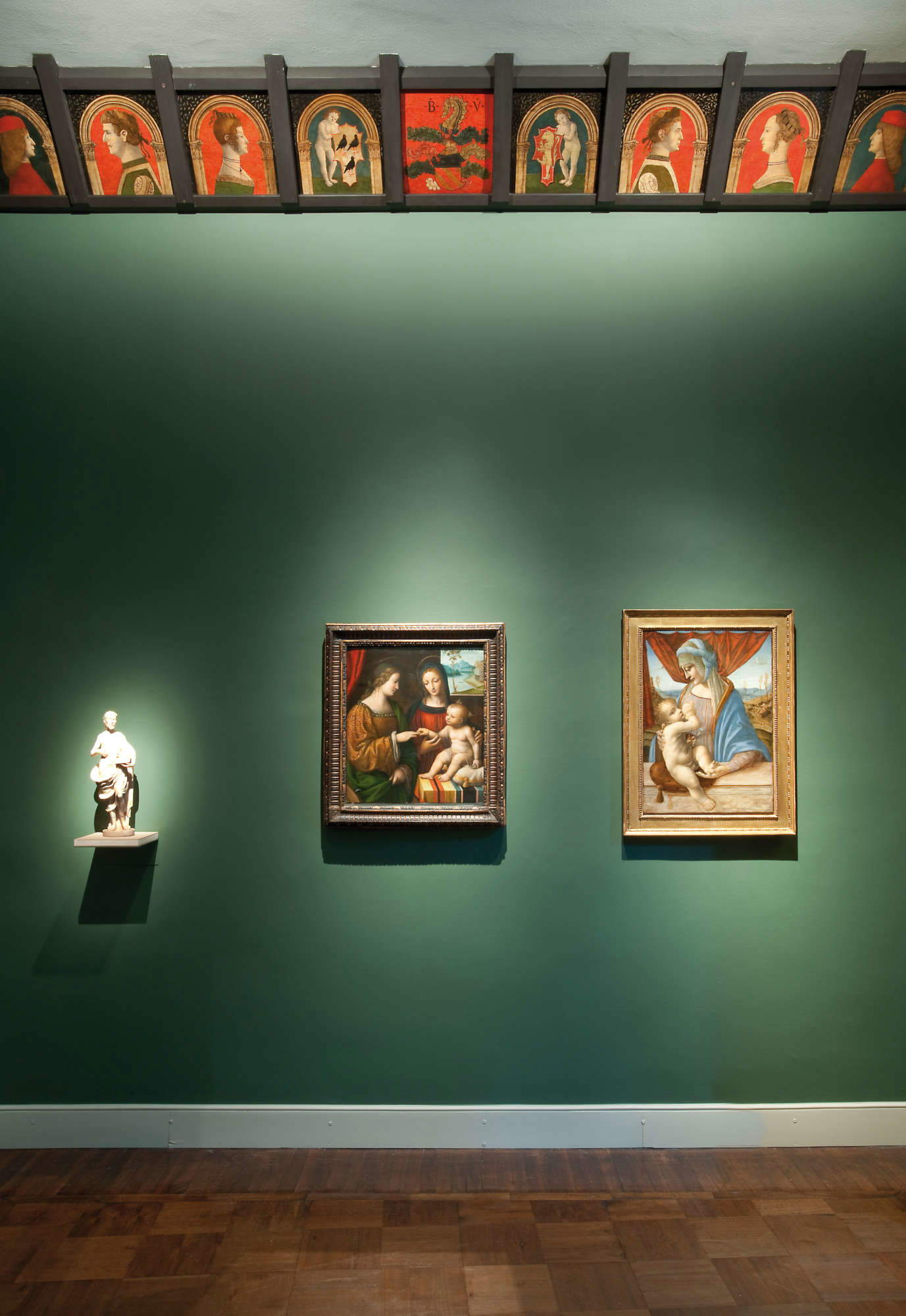 The
TheSome frames from the 1950s were also replaced that were ill-suited and excessively impactful compared to the wonderful 19th-century frames that still enrich some masterpieces. This is the case with the panel depicting the Child Jesus by Marco d’Oggiono, now enhanced by a precious 16th-century frame donated to the museum by the Canesso Gallery, and with the diptychs by Andrea Solario, St. Anthony the Abbot and St. John the Baptist and Andata al Calvario. Bernardino Luini’s Mater dolorosa and Christ Carrying the Cross are now presented with new frames made on the basis of historic ones lost during the war, documented by archival images. Finally, a number of historic seats, until now in external storage, have been recovered and restored. A new protagonist in the dress of these rooms is definitely the color: green that creates an important link between past and present and accompanies the visitor in those evocative environments that tell the story and enhance the collection.
This is a first renovation project that involves several aspects. “The project stems from different needs: listening to the public and the necessary renovation of some rooms,” says director Alessandra Quarto. “The observatory on the public launched in January, in collaboration with IULM University, and concluded in May, revealed the need to update the ordering of the works, which in some rooms was excessively dense and difficult to read, to modernize the lighting system allowing a clear view and greater enjoyability of the paintings From the coloring of the pictorial surfaces to the discovery of the smallest details, and to have a more contemporary and accessible visitor support.”
“Today anyone who enters a museum should find themselves immersed in an inclusive and interactive reality,” adds Quarto: “a museum that is ’alive’ and increasingly in relationship with the community of which it is a part, aware of its social role and of its always being ’contemporary.’ A place of knowledge in which to reread the past on a daily basis in order to design a shared future, a place capable of educating, of stimulating, of moving, of generating civilization.”
“To visit a museum,” the director concludes, “one must also be led through the eyes, in a unique and unforgettable experience. Helping to look, communicating, telling are the three declinations of the main function of an accessible museum institution. And these rooms want to be the beginning of a new path of the Poldi Pezzoli Museum in this sense. A layout that has placed itself in dialogue, with balance, with the other rooms of the museum: the historical ones, those acquired during the 20th century and the more recent ones of 2017. An arrangement that aims to recapture the spirit of the refined collector who had set up the rooms of his particular apartment to accommodate the works and enhance them to the fullest, creating a unique narrative frame.”
Poldi Pezzoli is joined in this project by Kerakoll, a leader in sustainable building materials, including those for interior decoration. The Emilian company’s Color Collection palette was selected as the most suitable range of colors for the museum rooms that hold paintings, furniture and sculptures from Poldi Pezzoli’s collection. The choice fell on a forest green shade that recalls the natural element, relaxing and extremely versatile.
“We are proud to be alongside the Poldi Pezzoli Museum in this project to refurbish the rooms, where the importance of ’beautiful and well made’ and the impact of color, capable of moving and leaving a memorable memory in the visitor, can be touched,” said Alessandro Dondi, Marketing & Communication Director of Kerakoll Group. “Our being B Corp and Benefit Society makes Kerakoll a reality capable of generating positive value in society and in our country. Initiatives like these allow us to help take care of our cultural and artistic heritage.” To celebrate this new exhibit, the Museum is once again offering short half-hour lunchtime guided tours dedicated to the masterpieces in the Lombard Rooms. The visits, included in the entrance fee, will be held every Thursday starting Sept. 28 at 1:15 p.m. and will see the scientific staff explain the masterpieces by Del Maino, Bergognone, Solario and Boltraffio: it will be an opportunity to discover the most representative works of the Lombard Renaissance and their exciting history, related to their author, composition, collecting history or restoration.
 |
| Milan, the new layout of the Lombardi rooms at the Poldi Pezzoli Museum |
Warning: the translation into English of the original Italian article was created using automatic tools. We undertake to review all articles, but we do not guarantee the total absence of inaccuracies in the translation due to the program. You can find the original by clicking on the ITA button. If you find any mistake,please contact us.